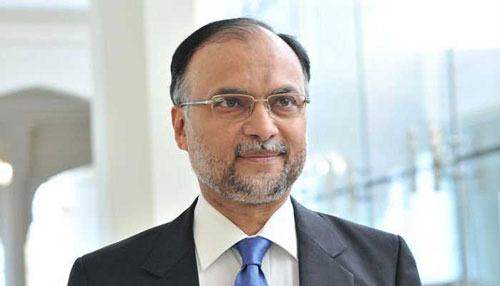The China-Pakistan Economic Corridor (CPEC), a flagship project of China’s Belt and Road Initiative (BRI), has emerged as a transformative force reshaping the socio-economic transformational impact on the lives of people in Pakistan, former Minister for Planning and Special Initiative Ahsan Iqbal said.
“When we started CPEC in 2013, Pakistan was suffering from a major energy crisis. We were experiencing power shortages for 16 to 18 hours per day, and we had major infrastructural bottlenecks with very poor physical infrastructure,” he said in an exclusive interview with China Global Television Network (CGTN).
And because of a lack of electricity, energy was not there, and industrial and agricultural production was suffering, which meant there was more unemployment, which was a major contributor to more poverty, he added.
Ahsan Iqbal said that through the CPEC, in three years, more than $25 billion of investment came into Pakistan that modernized infrastructure and created new roads to connect many regions. It provided more than 8,000 megawatts of new power, which helped the country overcome power shortages.
“As we had energy in the economy, our agriculture and industrial outputs improved, which brought more employment for thousands of young people and also helped them come out of poverty,” he added. About special economic zones, he said that nine special economic zones have been identified in different regions of Pakistan and added, “All regions are taking part and taking benefit from CPEC, which is another indicator that it is a very inclusive project and it does not leave anyone behind.” “We are now working with China to set up industries in these special economic zones, through which both Pakistan and China can work together and export goods to third countries,” he added.
“Gwadar Economic Zone is developing very fast, but in addition to that, nine more economic zones are being developed in Pakistan, in which we hope that investment that will come from China will help us in industrialization and that will be a major contributor towards structural transformation of the economy.”
He opined that it would create more jobs, and most importantly, Pakistan needs to improve its export performance, adding, “We hope that with Chinese technology and investment and their access to global supply chains, we will be able to improve our exports as well.”
Terming CPEC a game changer for Pakistan and the region, he said that the future of economic development lies in regional cooperation.
“We can create an economic market for a huge benefit for three billion people living in South Asia, China, Central Asia, and the Middle East through regional connectivity,” he added.
He said that therefore, programs like CPEC and BRI could help people eliminate poverty and unemployment and realize the dream of shared prosperity as well as people-to-people contact.—APP










